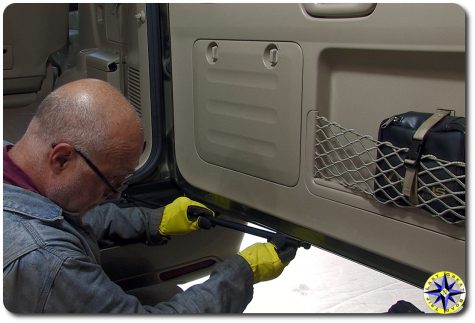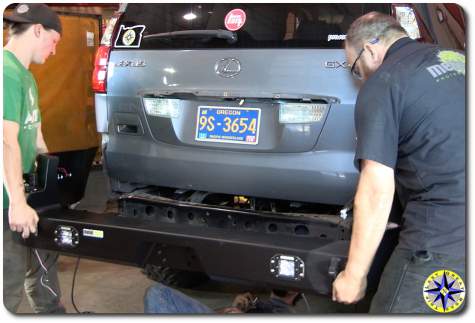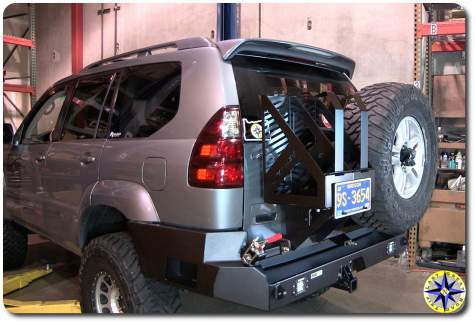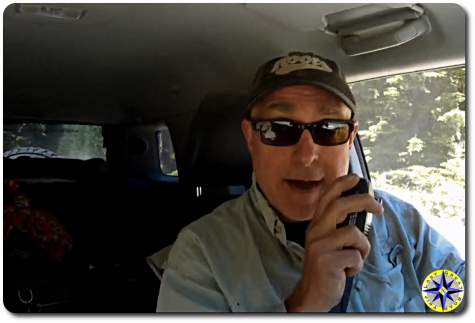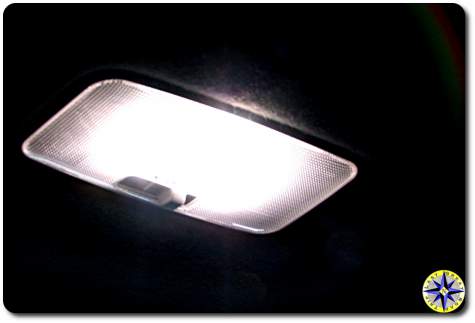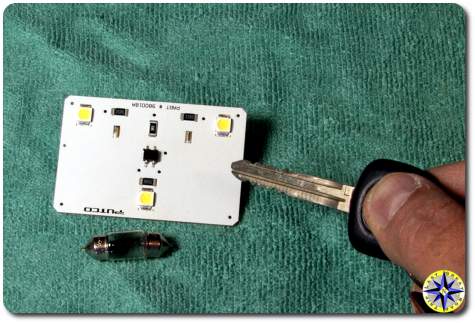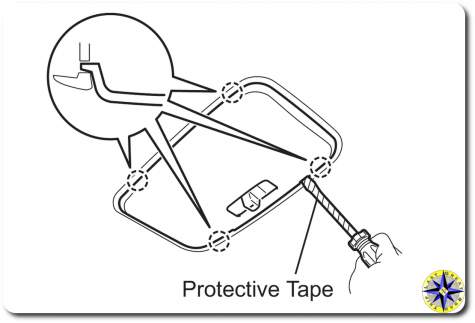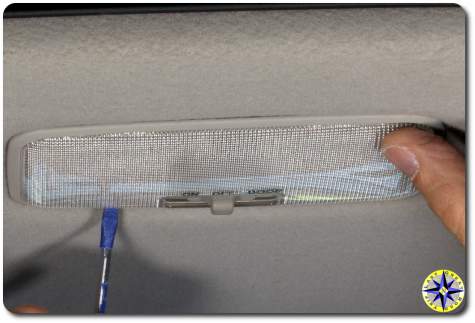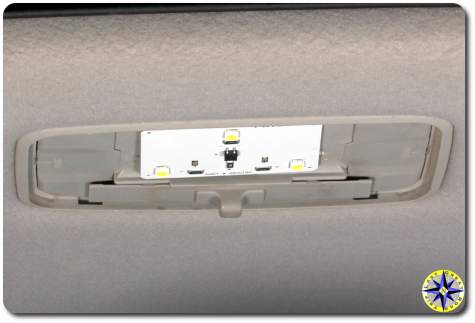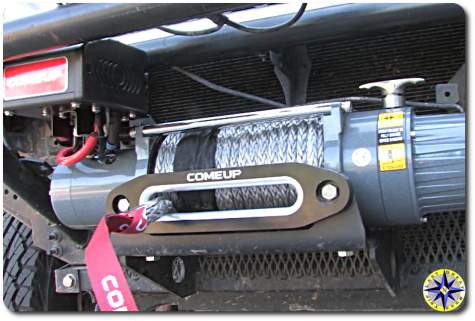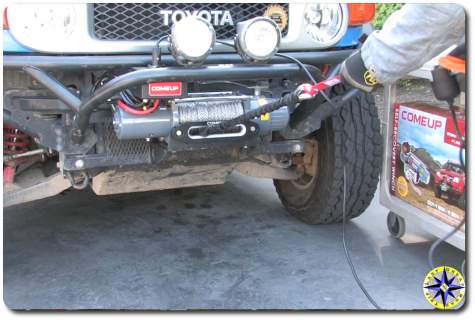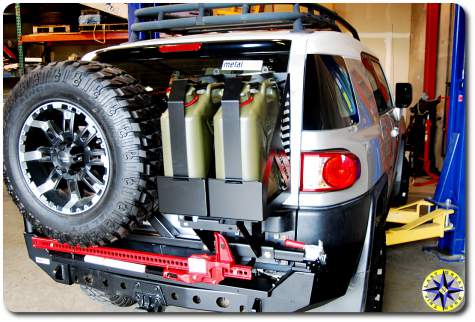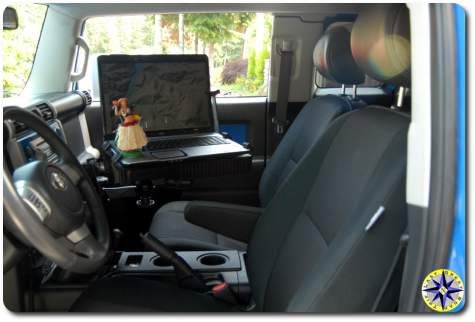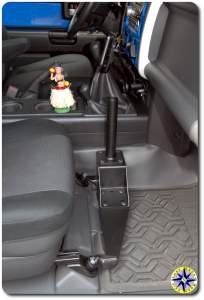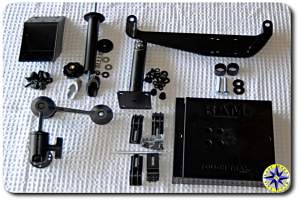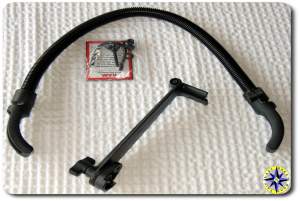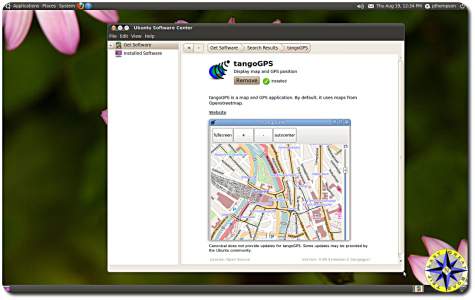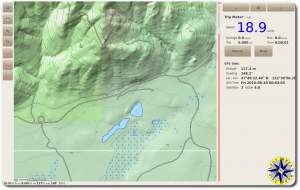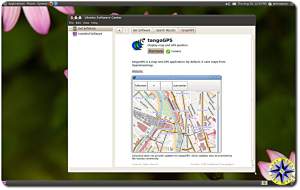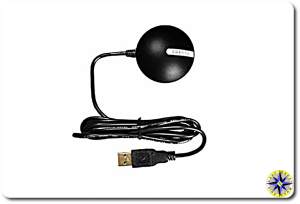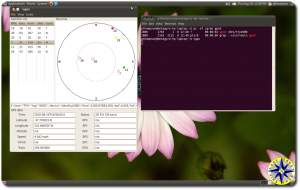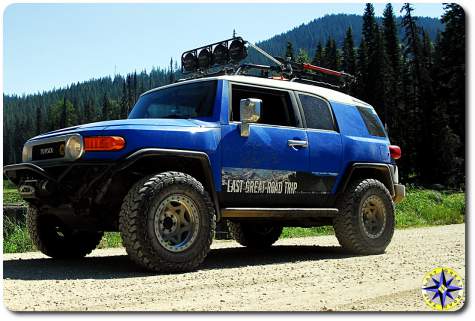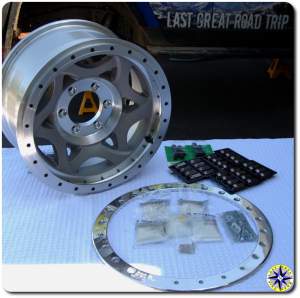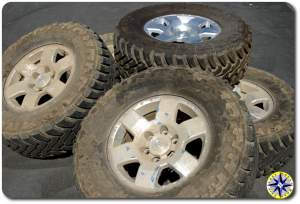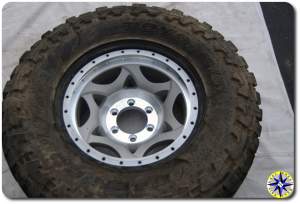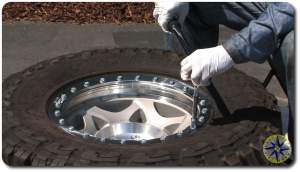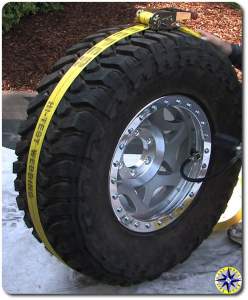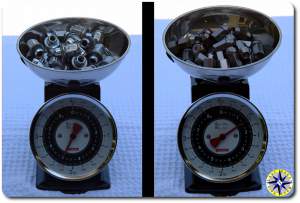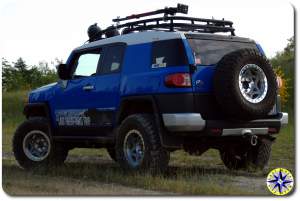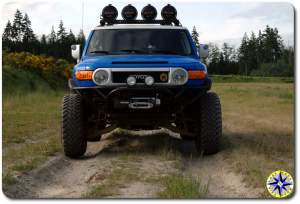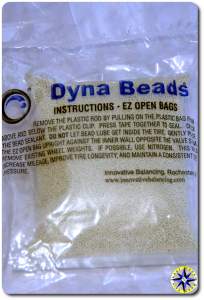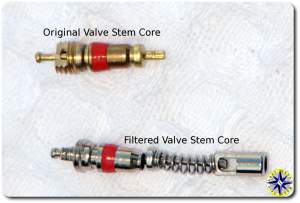The other day, Hula Betty, in her most sportive, I get to work on her truck, but she wants this fixed now voice, announced it was time for me to replace the clunky Lexus GX470 rear door stopper with a gas assisted strut that will allow the door to glide open, stay open and easily close.
A common complaint about the Lexus GX470 and Toyota Prado 120 is their rear door stopper mechanism’s poor design. Even in a slight breeze the rear door becomes randomly self-closing if you forget to lock it open. And opening the door with an arm full of gear can be overly challenging on an angle. Changing out the original door stopper mechanism with a gas strut solves both problems as well as adding a smooth glide on opening or closing the door.
Changing out the Lexus GX470 or Toyota Prado 120’s OEM door stopper with a gas strut and door reinforcement plate is a simple mod that anyone can perform in no time at all.
You will need a couple of tools:
- Felt tip marker
- Flat head screw driver
- 10mm box wrench
- 12mm box wrench
- Small grinder
- Electric drill
- 5/16″ drill bit
The parts required are:
- Gas strut – 24″ open length with 40lb of force
- 10mm Ball Studs, M8 X 1.25
- 2 in. x 36 in. Aluminum Flat Bar at x 1/8 in. thick
Step 1 -Using a flat head screwdriver, pry off the little round cap covering the bolt holding the OEM door stopper to rear frame of your Lexus GX470.
Step 2 – Remove the old clunky door stopper mechanism. Start with the bolt you just exposed on the bumper. Then remove the two bolts on the underside of the rear door. To avoid scratches, support the door stopper with one hand while you remove the bolts with the other.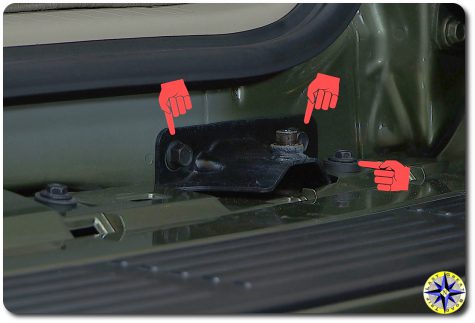
Step 3 – Remove the long thin plastic cover over the gap between the truck and the bumper. The Lexus GX470 has a portal on the cover for sliding in the jack handle to lower the spare tire. If you remove that little portal cover you can get a better grip to remove the long cover running the length of the bumper body gap.
Step 4 – After the cover is removed you will see the bracket that the old door stopper mechanism on your Lexus GX470 or Toyota Prado 120 attached to. Using a 10mm wrench, start by removing the bolt on the bracket that is attached to the bumper.
Step 5 – A 12mm wrench will remove the two bolts holding the bracket to the back of the truck frame.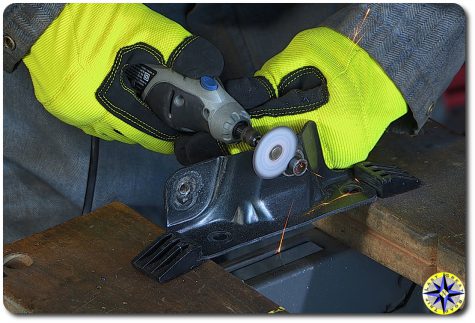
Step 6 – With a cutting disk attached to a small grinder, cut away the portion of the bracket that the OEM door stopper slide onto. This is just above the point at which the threads begin. After completing your cut, smooth down any high points and rough edges with a grinding disk.
Step 7 – Throw a little rattle-can paint on the bracket to keep everything looking good and prevent rust from developing.
Step 8 – To fabricate a rear door reinforcement plate you will use the OEM door stopper as a template. Place the door stopper on the aluminum flat bar arranging as if the flat bar was the rear door and the door stopper would be attaching to it. Trace the edges and bolt holes onto the flat bar with a marker.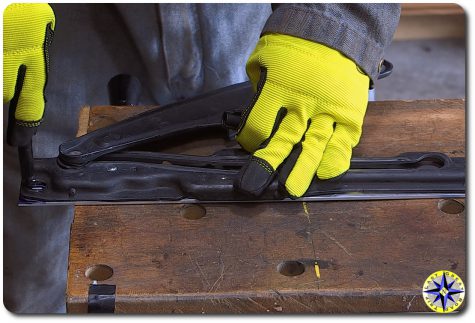
Step 9 – Cut the aluminum flat bar along the traced lines using your small grinder with a cutting disk.
Step 10 – Drill out the two holes for the bolts to pass through. Notice that one of the bolt holes is a bit elongated to allow for slit adjustments.
Step 11 – Sand or grind down any rough burrs or sharp edges. If you want a professional look, lightly sand the entire flat bar to give it a brushed finish.
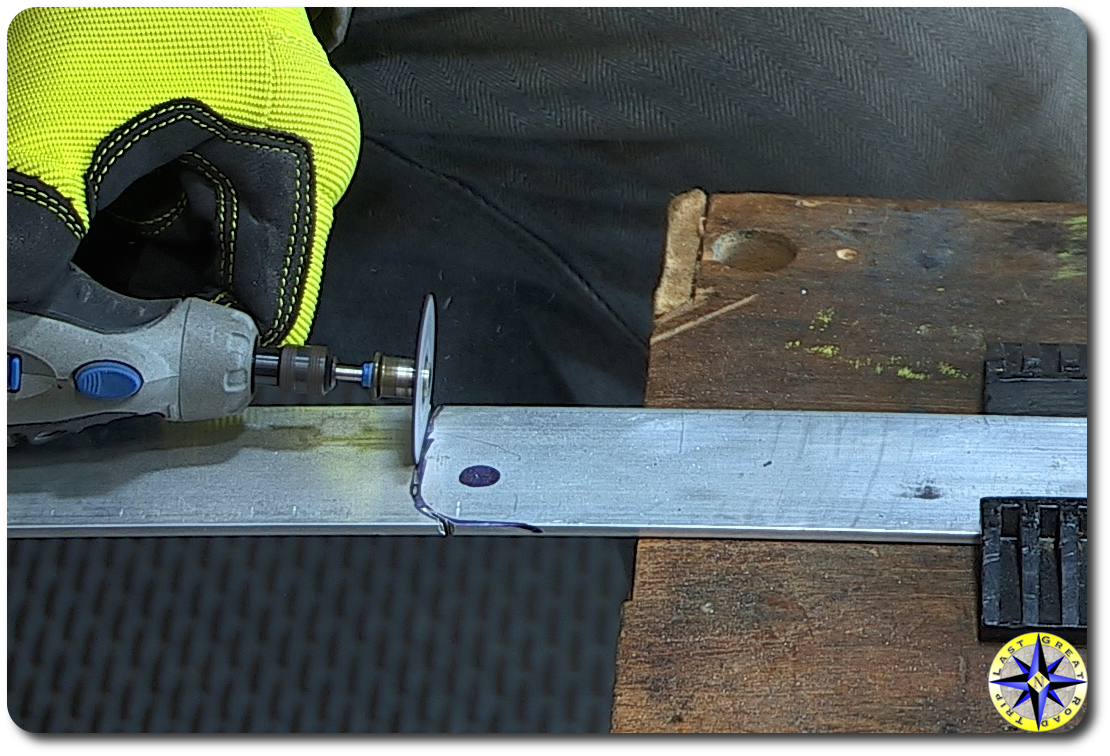 You are now ready to assemble everything back together.
You are now ready to assemble everything back together.
Step 12 – Reattach the bracket to the back of your Lexus GX470 with the three OEM bolts you removed.
Step 13 – Press the plastic bumper gap cover back into place. Don’t forget to put the spare tire portal cover in place as well.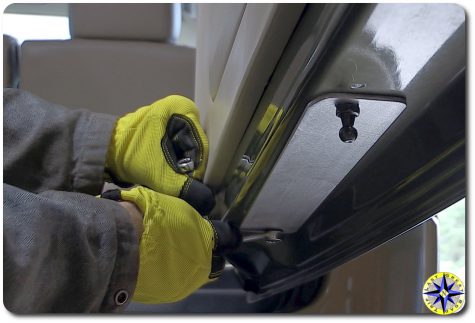
Step 14 – Screw one of the 10mm ball studs into the bracket you just attached.
Step 15 – Mount the door reinforcement plate you fabricated to the underside of your Lexus GX470’s rear door using one of the OEM bolts that held the door stopper in place and the second 10mm ball stud. The 10mm ball stud should mount into the original recessed nut hole on the underside of the door furthest away from the bumper. The OEM bolt screws into the original recessed nut hole closest to the bumper on the underside of the rear door.
Step 16 – Snap the gas strut onto the 10mm ball stud at the bumper first then to the 10mm ball stud on the rear door.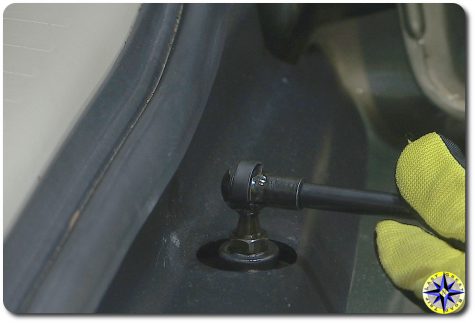
Step 17- Give everything a good tug to ensure it’s securely attached and your ready to test your new, smooth gliding Lexus GX470 rear door.
Note: Since your Lexus GX470 rear door will open and close tens of thousands of times, get in the habit of touching the door lightly and slowing it just before it fully opens in order to avoid any stress build up over time on the strut.
If you find yourself down under you can get a really cool complete rear door strut kit for the Pardo 120.
And in case you were curious, Hula Betty loves this mod!

